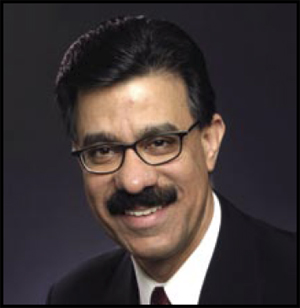|
July 2009 | Volume 12 / Number 7
Open Source
Talking with Asif Naseem, President & COO of GoAhead SoftwareBy: Richard “Zippy” Grigonis
Not everybody loves open source – especially those vendors competing for market share who argue that their technology has (at least for the moment) some inherent advantages over such systems. Take for example GoAhead Software (News - Alert) (www.goahead.com) and its new SAFfire 3.0, high availability and management middleware that supports the open specifications of the Service Availability Forum, a consortium of communications and computing companies working together to develop and publish HA and management software interface specifications. (GoAhead was a co-founder of the SA Forum.) GoAhead’s primary markets are telecom and aerospace/defense. The platform-independent SAFfire supports the SAForum’s Application Interface Specification (AIS) and the Hardware Platform Interface (HPI (News - Alert)). GoAhead’s President and COO, Dr. Asif Naseem (who is also President of the SA Forum), recently told Yours Truly what he liked and didn’t like about open source technology. RG: Where do you think open source fits in? AN: Our new SAFfire 3.0 is a commercial version based on open standards. We do have competition based on open source technology. The subject of opens source pops up in the industry quite often when we talk to potential customers about our offering. They ask, ‘Why shouldn’t I get open source software, which is free? Why should I adopt your technology which costs money?’ With any business model we must look at how ‘horizontal’ is a particular technology’s play; that is, the breadth of its market and the technology’s complexity. Protocols such as TCP/IP, SNMP or TIPC are very popular. They’re a horizontal play. Everybody wants and uses them and they’re not too complex. In such a technological area the open source model has been successful. It’s available to everybody. Open source software versions of these anything are very well-known and people know what they’re getting. Then look at something that has broad market applicability, but higher complexity, such application servers, operating systems such as Linux and carrier-grade Linux, and relational databases. We’ve seen open source models succeed in this area too. The area in which we play, however, is populated by things that are very ‘niche-y’ – technologies of high complexity serving narrow markets, such as in-memory databases. These things have to be very efficient and have a small footprint for a set of applications, be they for telecom, finance, or whatever. OSS and billing systems are pretty complex, but have very specialized application – they’re not a horizontal play at all. And high availability middleware, in our view, falls in this category. It’s highly complex and the market is very specialized. In this area we see that the open standards commercial model has been quite successful. We’ve repeatedly tested to see what model works best in these situations, and we continually come to the conclusion that, for this specialized market and complex complex area, following the open standards and commercial implementation is actually the way to go. IT Today @ TMC
Headlines
Upcoming Events
MSPWorld
The World's Premier Managed Services and Cloud Computing Event Click for Dates and Locations Corporate News
|
|






